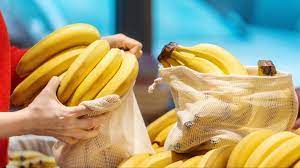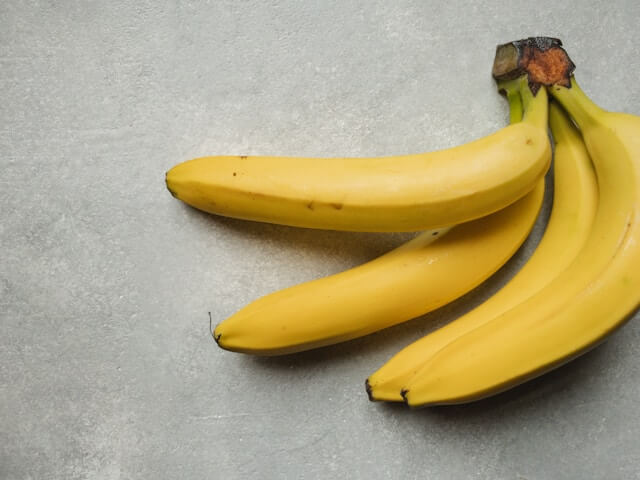The humble banana, a breakfast staple and afternoon snack savior, might face a bumpy future. Rumors of a looming banana shortage swirl, fueled by fungal diseases, extreme weather, and economic pressures.
But fear not, fruit lovers! While some regions may see reduced availability and higher prices, a complete global banana blackout is unlikely. Dive deeper into the story behind this potential shortage, explore the challenges our favorite fruit faces, and discover what you can do to ensure a happy ending for bananas and banana-lovers alike.
Let’s peel back the layers and understand the complex factors at play, empowering ourselves to make informed choices and savor this tropical treasure for years to come.
About Banana
Peel back the layers of history and discover the fascinating journey of the banana! Its tale stretches back thousands of years, possibly as far as 10,000, with origins in Southeast Asia. From being a humble staple food for early humans to its transformation into the world’s most popular fruit, the banana’s voyage is packed with adventure.
Imagine ancient trade routes carrying the fruit across continents, its exotic appeal reaching Greek, Roman, and Arab cultures. Witness the birth of the modern banana through a chance hybridization in Africa, creating the seedless, sweet treat we enjoy today. Fast forward to the 19th century, and the banana embarks on another adventure, conquering the seas to become a global phenomenon.
However, its path hasn’t been without challenges. From fungal diseases to complex supply chains, the banana faces threats even today. Yet, it endures, a symbol of resilience and deliciousness. So, the next time you peel open a banana, remember, you’re holding a piece of living history, a testament to human ingenuity and the enduring appeal of this tropical treasure.
Is There A Banana Shortage?
Yes, there indeed is a banana shortage. Factors such as climate change, disease, and economic changes have all contributed to a significant decrease in banana production.
The primary culprit is a fungus known as Tropical Race 4 (TR4), which has decimated banana plantations worldwide, particularly those growing the Cavendish variety, which accounts for the majority of bananas globally consumed.

Reason For Shortage
The banana shortage can be attributed to a variety of factors, the most prevalent being the TR4 fungus. This pathogen attacks the roots of banana plants, causing them to wilt and eventually die. The fungus is highly contagious and can easily spread from one plantation to another, making it extremely difficult to control.
Climate change also plays a significant role in the banana shortage. Changes in weather patterns, including increased temperatures and erratic rainfall, have affected banana growth. Economical changes, like increased production costs and lower market prices, have also made banana farming less profitable, leading to reduced production.
Related Article:
Impact On Banana Lovers
The banana shortage has had a profound impact on banana lovers. Bananas are a staple in many diets, known for their nutritional benefits and versatility.
The shortage has led to increased prices and decreased availability of bananas, making it harder for consumers to enjoy their favorite fruit. Banana-based products, such as banana bread and smoothies, have also become more expensive due to the shortage.
Consumer Reactions To The Discontinued
Consumers worldwide have reacted with dismay to the banana shortage. Many have expressed frustration at the increased prices and lack of availability.
Some have even started hoarding bananas, fearing that they will soon become a luxury item. However, others have used this as an opportunity to explore other fruits and have discovered new favorites in the process.
Challenges Faced By Banana Production
Bananas are tropical fruits that require very specific conditions to thrive. They’re vulnerable to diseases and pests, and climate change is exacerbating these challenges.
Recently, a deadly fungus known as Panama disease has been devastating banana crops. This fungus is not new, but it has resurfaced with a vengeance, causing a significant banana shortage.
The banana industry also faces socio-economic challenges. Many banana farmers struggle with poverty due to low wages and poor working conditions. This discourages new generations from entering the sector, further threatening banana production.
What Are The Solution For Help With The Banana Deficiency?
There are several proposed solutions to the banana shortage. One involves developing new banana varieties that are resistant to diseases like Panama disease. Genetic modification is a controversial but potentially effective solution in this regard.
Another solution is to improve the conditions for banana farmers. Fair trade initiatives aim to ensure farmers receive fair compensation for their work, which could boost the industry’s sustainability. Additionally, promoting organic and sustainable farming practices can help protect the environment and enhance banana yield.
Where Is The Banana Shortage Most Severe?
The banana shortage is most severe in countries heavily reliant on bananas for food and income. These include several Latin American and Caribbean nations, as well as parts of Africa and Southeast Asia.
In these regions, the impact of the banana shortage is not just economic but also a matter of food security.
Conclusion
The banana shortage is a real issue affecting consumers worldwide. While measures are being taken to combat the TR4 fungus and adapt to climate change, it may be some time before banana production returns to normal levels.
In the meantime, consumers will need to adjust their consumption habits and explore other nutritious fruits. Despite the challenges, the banana shortage serves as a reminder of the importance of sustainable farming practices and the need for diversity in our diets.
FAQs – Banana Shortage
Is There Definitely A Banana Shortage?
Yes, there is a complete shortage, but reduced availability and higher prices are possible in some regions.
What’s Causing The Shortage?
Black Sigatoka disease, extreme weather events, geopolitical instability, and rising production costs are key factors.
Which Bananas Are Most At Risk?
Cavendish bananas, the most common variety, are particularly susceptible to Black Sigatoka.
Are There Solutions?
Investing in disease-resistant varieties, diversifying production, and improving farming practices are crucial. Supporting fair trade and sustainable farming can also help.
What Can I Do As A Consumer?
Be mindful of your banana consumption and avoid waste. Try different varieties or support local farmers. Stay informed and advocate for sustainable practices.

